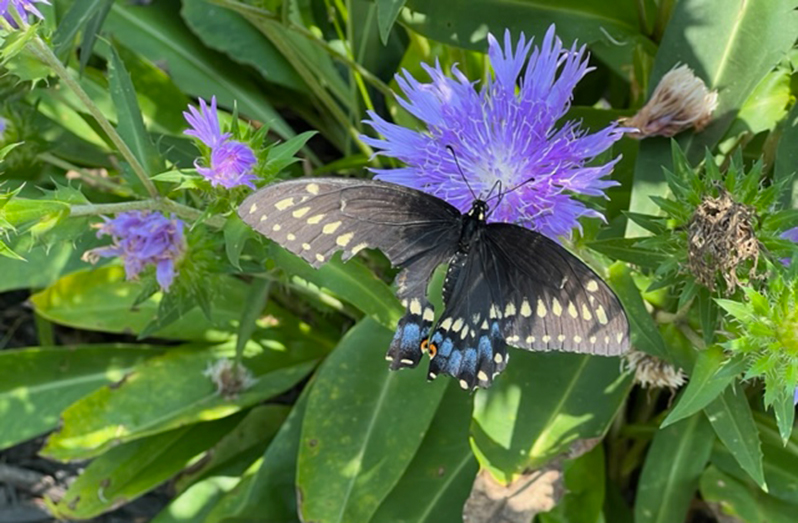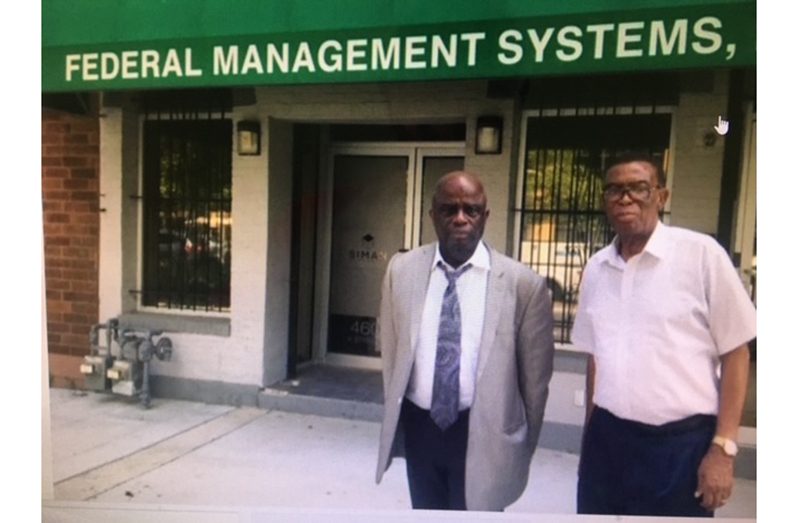By Francis Quamina Farrier
In the article to follow, I will share some sentiments on two topics that are close to me: the community of Buxton and nature
Writing about the village of Buxton on the East Coast Demerara and about Buxtonians is always exuberating for me. In this article, the spotlight shines brightly on Aubrey Stephenson, AA, one of the Guyanese luminaries from Buxton. Aubrey Stephenson is the Founder, President and CEO of Federal Management Systems, with operations in Guyana and also in Washington DC, USA.
The history of Buxton, which is located 12 miles east of Georgetown, and Buxtonians, are always noteworthy and inspirational. The people of Buxton always seem to shine, even when dark clouds hang menacingly overhead or the village is inundated with cruel flood waters, which have destroyed tens of thousands of dollars worth of crops. But, with super resilience and grit, Buxtonians have always bounced back and regained their economic stronghold. They have never been a people to allow setbacks to go unchallenged and not solved.
The history of the village goes back to 1840, when 128 former enslaved Africans pooled their financial resources of $50,000, which is well over $50 million at present, and purchased the 500-acre Plantation New Orange Nassau. That such a project was conceived and carried out just a few years after Emancipation is testimony to the resilience of the people of Buxton for well over a century. In appreciation to the British parliamentarian Thomas Fowell Buxton, who had fought relentlessly for the abolition of slavery in the British colonies, the emancipated enslaved Africans named their new village after their hero, Thomas Fowell Buxton.
There are scores of Buxtonians who have made their village and Guyana extremely proud over the decades. In our own lifetime, Buxtonian Haslyn Parris was appointed Chairman of the Demerara Bauxite Company (DEMBA) when he was just 30 years of age. He, in turn, sponsored and contributed to many projects – especially those which benefit youths.

Never hurt a butterfly all your life
In an article of mine not so long ago, I threw the spotlight on birds and the freedom they enjoy in flying wherever they desire, as long as they deem it safe and comfortable. That was juxtaposed with the many constraints that humans face when travelling, especially across international borders. In this article, the spotlight is on another flying creature; the butterfly. Most of us love to see butterflies, especially in flight, zipping around from flower to flower and extracting the sweet nectar. We are also well aware that the extraction operation by butterflies has no damaging possibility as other extracting operations do. As we carefully observe the butterfly extraction operation, we are convinced that the beautiful little creatures have two agile wings. But that is not so. In fact, butterflies have four wings which they use to the maximum, and they do so in the action of the figure eight. However, the action is so rapid that tallying them is not easy. When we take the time to look closer at a butterfly which is not in flight, we realize that its wings are in fact transparent. Transparent and oh, so beautiful with designs of many colours. We also note that butterflies seem to do their flying with little ease, and doing so in all directions. Apparently, the designer of the helicopter drew inspiration by carefully observing butterflies in flight. Nonetheless, since helicopters do gain much higher altitudes than butterflies can ever do, there is hardly ever a butterfly crash.
In preparing for this article, I spent quite a lot of time observing the butterflies that frequent both sections of my little gardens – the flower garden and the kitchen garden. It became quite obvious to me that butterflies ‘nah gat kinna’ when it comes to flowers. Butterflies seem to like all types of flowers, and all colours of flowers, as long as there is nectar to be extracted. Scientists have discovered nearly 20,000 species of butterflies around the world. Scientific discoveries have also been made that butterflies use their feet to taste. Another scientific discovery about butterflies is that the life span of that small and tender creature is only a few weeks. Nonetheless, during their short lives, butterflies contribute to the much longer life lifespan of humans by the work they do in pollinating the flowers of fruit and other trees. Therefore, there is hardly any need for this 85-year-old veteran journalist to plead with you, if there is such a need, to be kind to butterflies and never to hurt them.



.jpg)








